Socca: chickpea flour flatbread
Socca ia a north Mediterranean flatbread made with a batter of chickpea flour, water and salt, cooked in olive oil. Incredibly simple, you can fry it like a pancake or bake in the oven and make your Socca crispy or soft.
Infinitely versatile, you can flavour the batter with your favourite herbs and spices. Top or stuff with meats, cheeses or veggies, or alongside stews and curries.
Perfect for gluten-free diets.
Jump to Recipe
SOCCA, FARINATA OR PANELLE?
I’d been meaning to have a go at Socca for literally years. It’s a flatbread or pancake from Nice in the south of France, made with just chickpea flour, salt and water plus olive oil for cooking. But didn’t it sound almost too simple to be as good as it was said to be?
I think I first saw it in Sophie Grigson’s Sunshine Food (2000). Her method aimed to replicate at home the original street food version, normally cooked in a large pan, divided up and wrapped in a cone of paper. She baked the batter in a roasting tin, the top sprinkled with chopped rosemary, until set and brown around the edges.
There exists an Italian version of socca, originating in Liguria, called farinata. It’s no surprise that there’s virtually no difference between the two as Liguria is just over the border from Nice. Indeed up until the middle of the nineteenth century, Nice went back and forth between French and Italian ownership.
Having been to lots of places in Italy and a fair few in France, but neither Liguria nor Nice, I’d never had socca or farinata in their homeland. However, to complicate matters further, in Sicily I did see a fantastic looking food truck serving their version, panelle. They make them in a similar way to fried polenta, but with chickpea flour. Sitting here now, I’m rather annoyed at myself for not trying some.
Anyway, socca/farinata/panelle ended up going on my ever-lengthening mental list of foods I was definitely going to get around to making. Some day.
A CHANCE REDISCOVERY
What finally prompted me to make socca was the chance rediscovery of an old recipe booklet. I was actually looking for the instruction manual for my ice-cream maker. I’m not sure why, as it’s about as basic as you can get; ‘switch on, churn, switch off’. I did find the manual, and in the same pile was The Guardian guide to baking. This packed little booklet was given away with the newspaper in 2007. When I rediscovered it, the day was rather warm (hence the ice-cream), so that afternoon I had a laze on the lawn and flicked through the recipes.
I recalled making some of the breads, including recipes written by Dan Lepard. I’d later learned how to make a sourdough starter, and my first sourdough loaves, from Dan’s excellent The Handmade Loaf. Although I’ve since developed my own, no-knead sourdough method, I still use his book for inspiration, most recently in this Walnut Bread.
SOCCA FROM SOHO
The recipe that particularly caught my eye this time was ‘Soho-style socca’. Dan explained that he’d learnt to make socca fried like pancakes rather than baking in the oven at a Soho restaurant. This socca, ‘folded like a handkerchief’, eaten with hummus, grilled aubergine and roasted red peppers, appealed to me even more.
I especially liked the sound of the suggested variation with parsley and fresh red chilli in the mix. This got me thinking that, in flatbread form, socca could accompany all sorts of foods. Chilli, curries, kofte, falafel. Basically anything you might want to dip into or have something wrapped around.
Excited at the prospect, I got experimenting the very next day. And once I started making them, I couldn’t stop!
CHICKPEA FLOUR
Usually labelled gram flour, sometimes besan flour, I always keep chickpea flour in the house. Essential for making Indian goodies like onion bhaji and pakora, I use it in my falafel too. It’s also a great choice if you need to avoid gluten or grains. I even make grain-free dog biscuits with gram flour.
Happily, chickpea flour is now widely available. From a supplier with a good turnover you should get a long shelf life, so it’s worth getting a large bag. Bought this way, it’s also pretty cheap: I paid £2 for two kilos.
SOCCA FLATBREADS
For my first socca, I borrowed a little from Sophie Grigson and a little from Dan Lepard.
As I was frying them as per Dan, it made sense to use his proportions of chickpea flour to water. However I was more comfortable with Sophie’s method of making the batter. I sifted the flour and salt, making a well in the middle before whisking in a little water to make a paste, then gradually added the rest of the water in a trickle. This seemed less likely to develop lumps than Dan’s suggestion of beating them together – although he also suggested starting off with a small amount of water first.
As with most batters, I think this one’s best left to rest before using. Make it at least an hour ahead if you can. The batter will still be quite thin, but that’s how it should be.
For my first socca I stirred in chopped parsley and a few garlic granules just before frying.
Make sure your oil (I use either light olive oil or a mixture of regular olive oil and a bland oil like sunflower) is hot before adding any batter to the pan. Stirring the batter before you make each flatbread, pour just enough of it into the hot oil to cover the bottom of the frying pan. It will only take a minute or two to cook underneath, then flip to cook the other side.
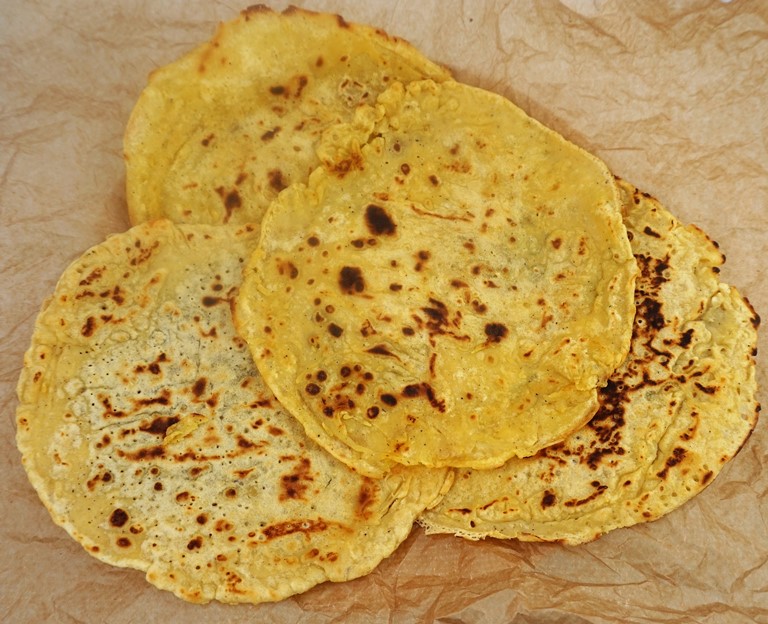
So they stay flexible for rolling I pile up the socca, a piece of kitchen paper between each one, while I finish cooking the rest. Update: I now find it better to stack and wrap in a clean cloth without the need for kitchen paper.
EATING SOCCA FLATBREADS
Socca is traditionally served with lots of freshly ground black pepper over the top. Eaten like this, with some pea shoots and tomatoes on the side, I couldn’t believe just how good my first batch was.
IT’S A WRAP
My current favourite way of eating socca is stuffed as a wrap.
Apart from being easy to make and adaptable to flavouring just as you like, I was pleasantly surprised to find how robust they were. I have to say I’m usually guilty of over-stuffing pitta bread and other wraps. This means they do have a tendency to fall apart in my hands before they’ve reached my eagerly-awaiting mouth.
But even the more-than-generous combination you see in the image above – lamb kofta, loads of salad, feta, pine nuts and tahini – wasn’t too much for a coriander and chipotle socca flatbread. Amazingly, the socca held together perfectly.
BAKED SOCCA
While I prefer socca as a flatbread for dipping or rolling up, I still think there’s a case for the oven baked version. Apart from anything else, there’s less hands-on time involved, so you can be getting on with something else while the socca cooks. I’ve found this makes it a really quick option for lunch.
In any case, if it’s a thicker socca with a creamy inside that you’re after, rather than a flatbread, then baking is the way to go.
The thickness of your socca will depend on the size of your baking vessel. A larger surface area will give you a thinner, crispier result while, with a smaller one, the centre of the socca will be soft. Apart from the olive oil used, the ingredients for socca are cheap so you may as well experiment and find what style you like best.
To bake the socca, choose a roasting tin, baking tray or ovenproof frying pan and add the oil. I experimented with a small, deep round tin, a flat Swiss-roll type tray and a large roasting dish. As I hope you can see from the images, this will give you quite different results.
Because of my preference for thinner and crispier, my favourite was socca cooked in the large roasting tray. Mine is an old, slightly warped tray, so the batter didn’t bake evenly across it. But that was fine with me as it meant the socca was lovely and crispy where the batter was very thin in one corner.
Whatever you use to bake the socca in, get it and the oil nicely hot in the oven before pouring in the batter. It will probably take between ten to thirty minutes to bake, depending on thickness and your preferred end result.
I used slightly more water in the baked than the flatbread socca to make it lighter. Again, experiment with different amounts of water and size of baking dish and see how you like the end product.
FLAVOURING BAKED SOCCA
As with the flatbreads, you can flavour the batter with herbs or other seasonings. With the baked version, you can also scatter goodies over the top before putting in the oven. I particularly liked one with chopped rosemary, chives, sage and finely grated Parmesan in the batter plus grated Cheddar over the top before baking.
Once cooked, leave to cool for about five minutes. This will make it easier to remove from the tin, tray or pan.
The thicker, creamier baked socca can be cut into triangles, squares or rectangles and served with olives, cheeses and salad. Cold, they make a nice change from lunchbox sandwiches.
Torn up mozzarella, chopped tomatoes, basil and a drizzle of olive oil over rosemary-flavoured socca was incredibly good.
I think next on my list to try will be socca stuffed with chilli, avocado, cheese and soured cream or Indian-spiced socca to eat with curries.
HAVE YOU MADE THIS RECIPE?
LEAVE A COMMENT & DON’T FORGET TO RATE IT
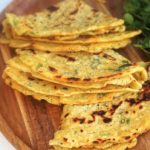
Socca: chickpea flour flatbread
North Mediterranean flatbread made with a batter of chickpea flour, water and salt, fried like a pancake or baked in the oven. Stuff or top with cheese, salad, tomatoes, meat, hummus etc.
Ingredients
- 150 g chickpea flour (also called gram, besan or garbanzo flour)
- 0.75 tsp salt see Recipe Notes for additional flavour ideas
- 250-400 ml water (amount depends on whether you're making flatbreads or baking the socca) see instructions
- light olive oil (or a mixture of regular olive oil and a bland oil like sunflower) for frying
Instructions
-
Sieve the flour and salt into a large bowl.
-
IMPORTANT: adding the water
For socca flatbreads, you'll need only 250ml water
For baked socca, you'll need 400ml of water
Make a well in the centre of the bowl and pour in a little of the water.
-
Using a whisk, gradually draw some of the flour into the water and mix to make a smooth paste.
-
Gradually add more of the water, drawing in more of the flour as you go until all are combined into a thin batter.
Put in the fridge for 1 hour.
For Socca Flatbreads
-
Put a medium sized frying pan over moderately high heat (e.g. on a hob that goes up to 6, heat at 4).
Brush oil over the heated pan then pour off any excess.
Stir the batter, then pour in a thin layer (approx. 50 - 60 ml) so that the base of the pan is just covered.
-
Cook until the top is set and the underneath is browned (1-3 minutes). Turn over and cook the other side (1-2 minutes). If they brown too quickly, temporarily turn down the heat for 30 seconds or so then back up again.
Note that the first socca may take longer than subsequent ones.
Remove to a plate and make more socca in the same way: stirring the batter each time and re-oiling the pan.
Depending on the size of your pan and how thinly you poured the batter, you should get 6 - 8 socca.
For Baked Socca
-
While the batter is resting, preheat the oven to 220C/200C Fan/Gas 6.
Put 3 tbsp of oil in a baking pan, tin or tray and put it in the oven to preheat: a larger surface area will give you thinner, crispier socca.
-
Stir the batter, then pour it into the hot oil.
Bake in the oven until set and browned to your liking: can take anything from 10-30 minutes depending on the size of your baking tray and how soft or crispy you want the socca.
-
Take the socca from the oven and leave to cool for 5 minutes before cutting into portions and removing from the tin.
Recipe Notes
Variations
Add chopped herbs, chillies, spices, cheese etc. to the batter.
For baked socca, you can also sprinkle flavourings over the top of the batter once it's in the baking tray: chopped rosemary is traditional, but cheese, tomatoes, vegetables salami etc. are also good.
Varying the amount of water used in the batter and baking it in different size tins and trays will give a crisper or creamier socca - experiment to see which you like best.
RELATED RECIPES

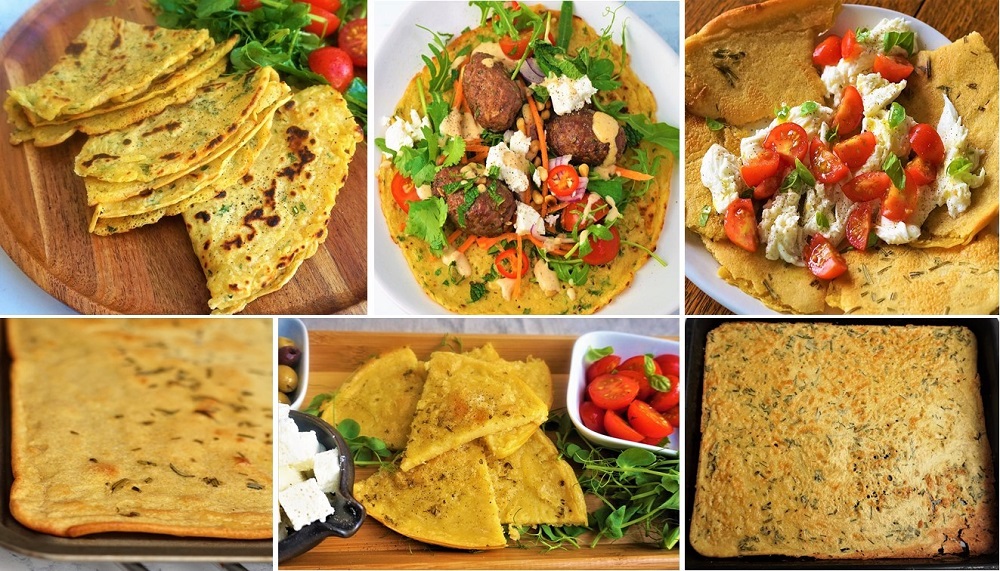

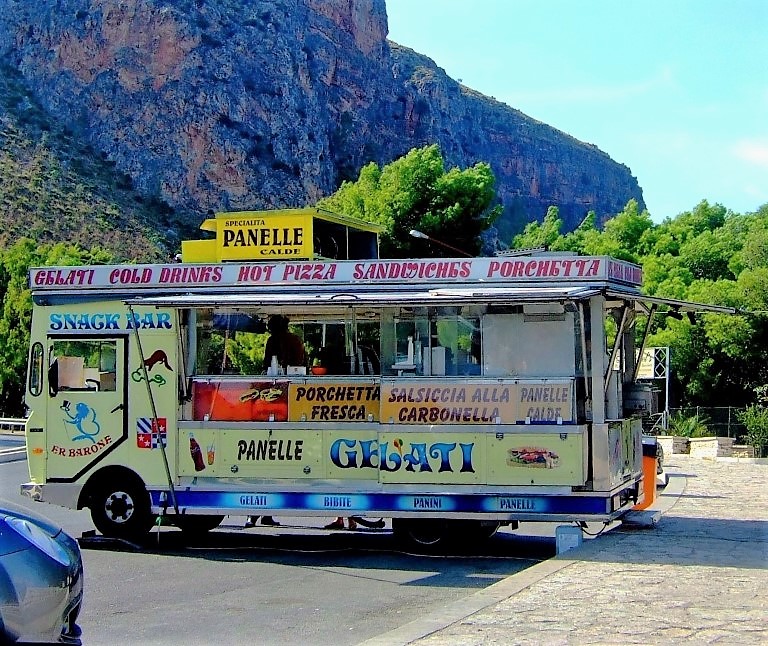
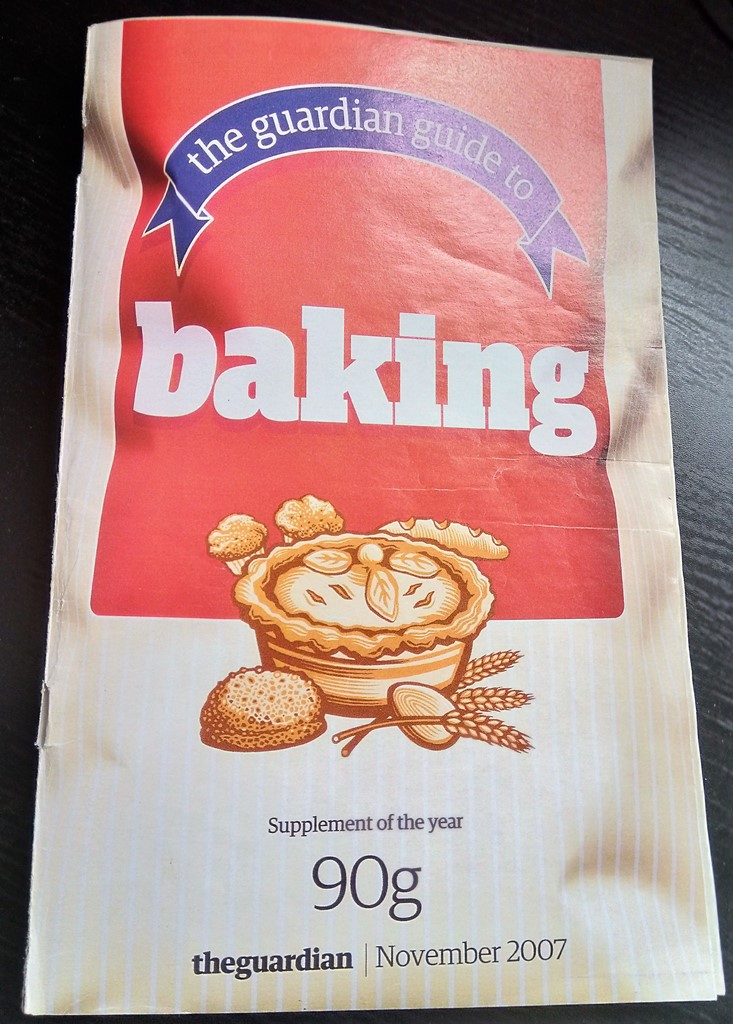
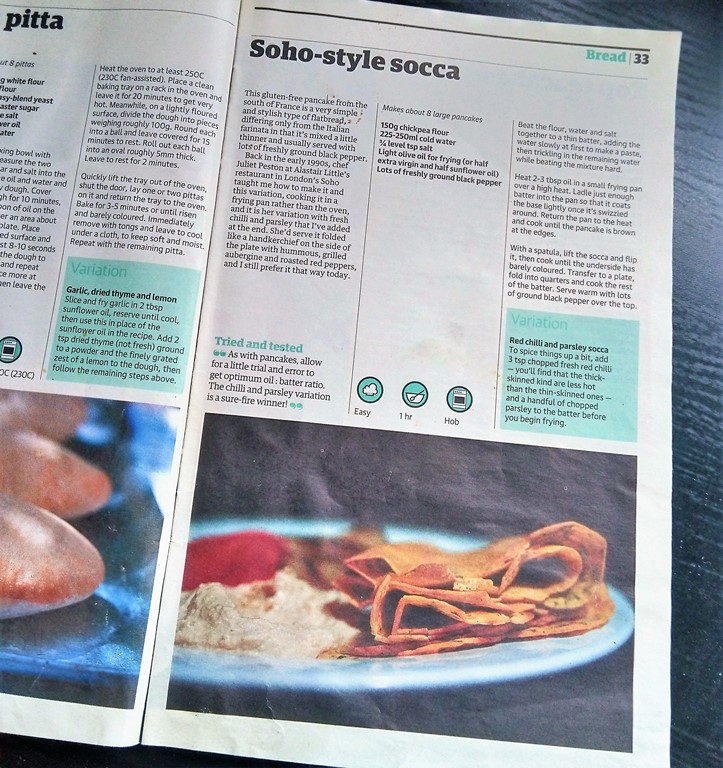
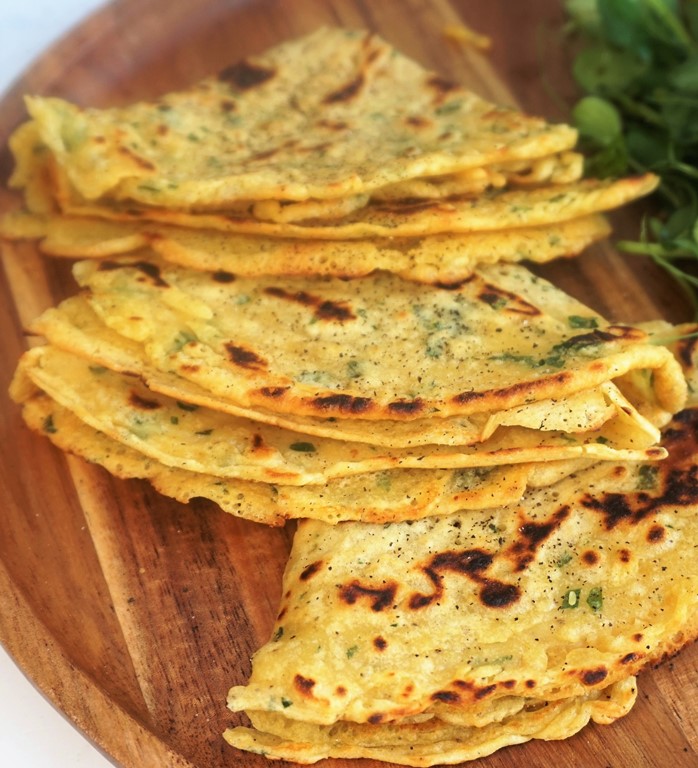
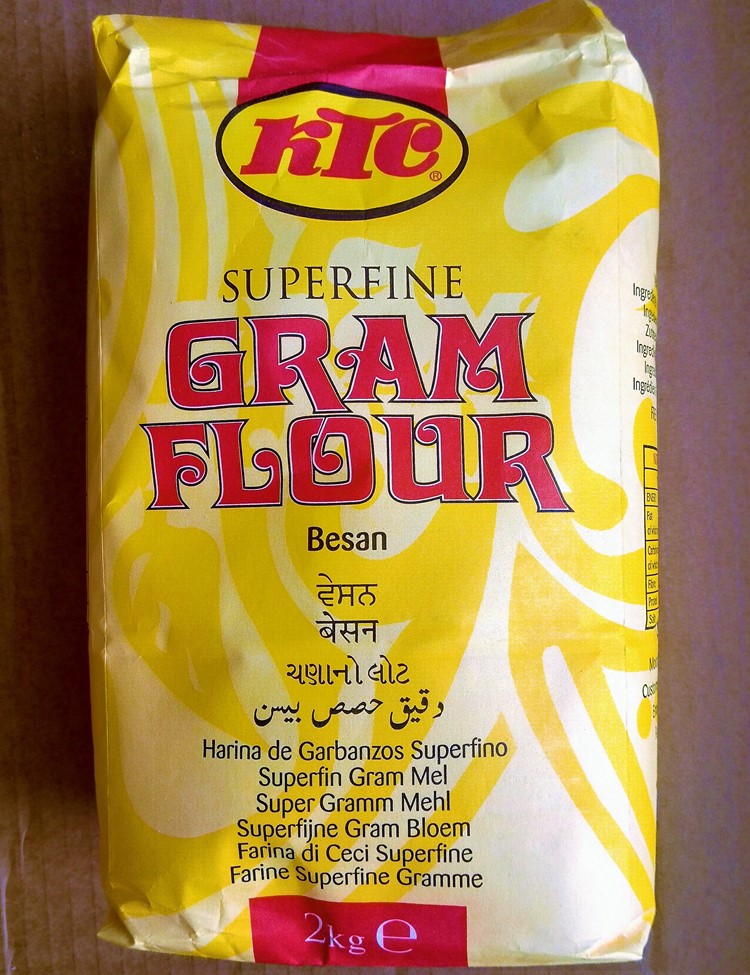
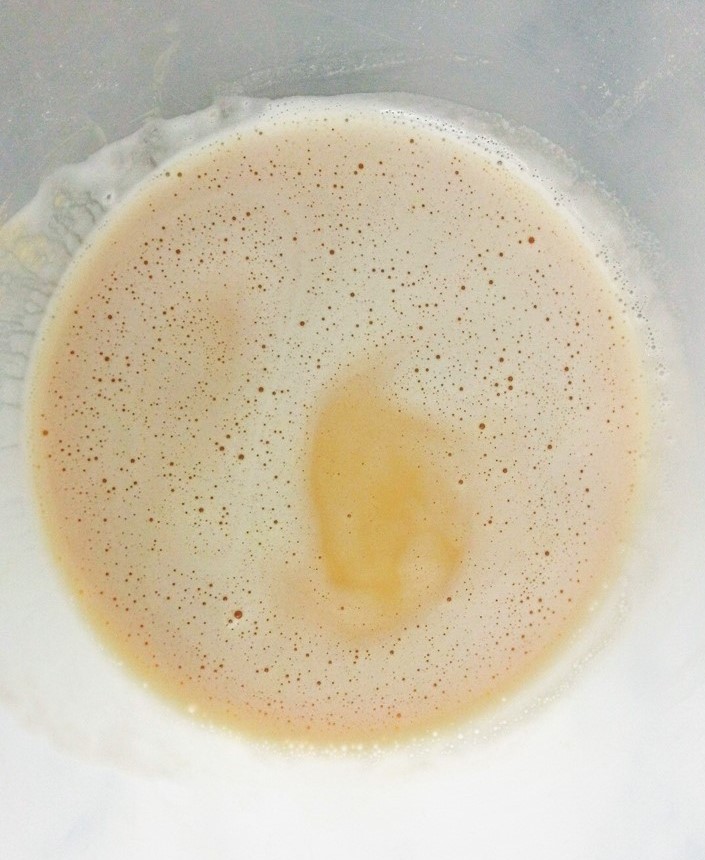
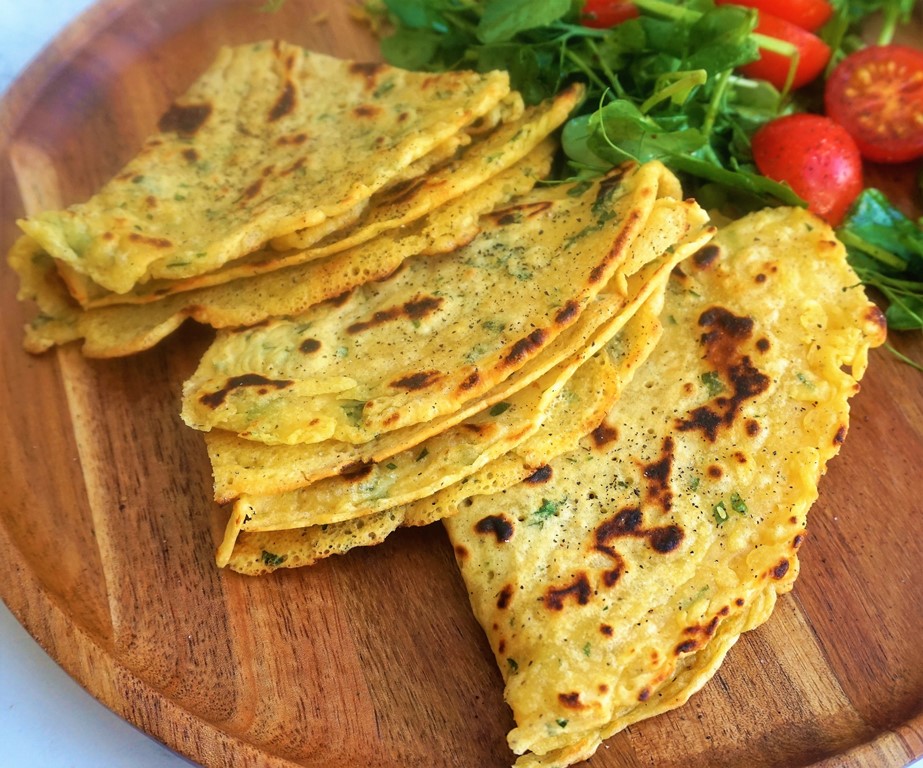
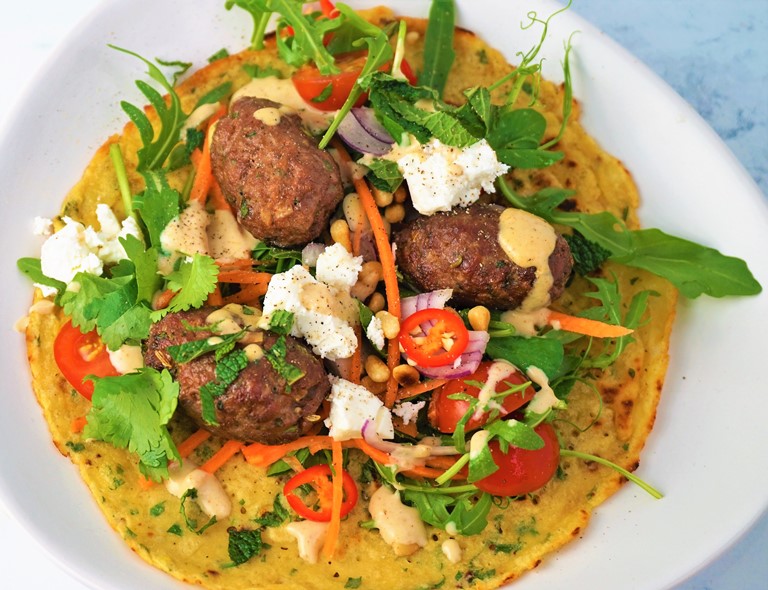
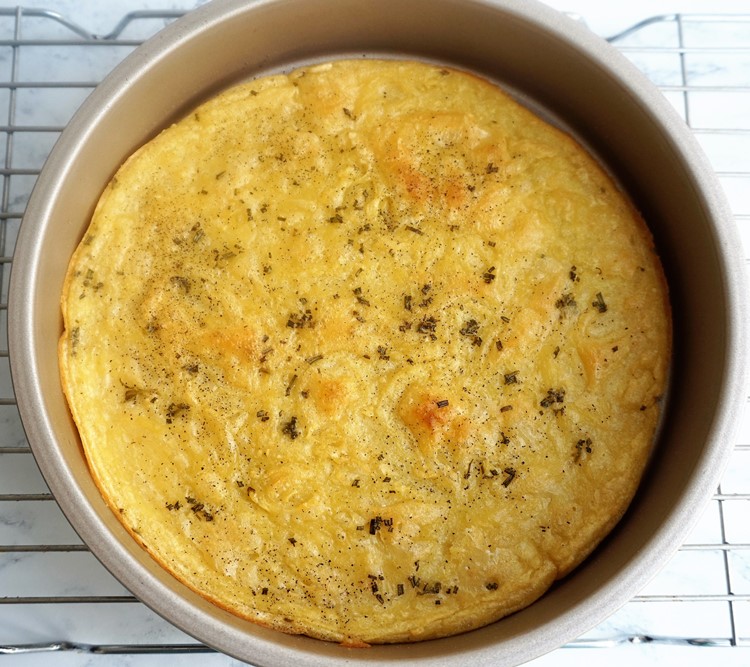
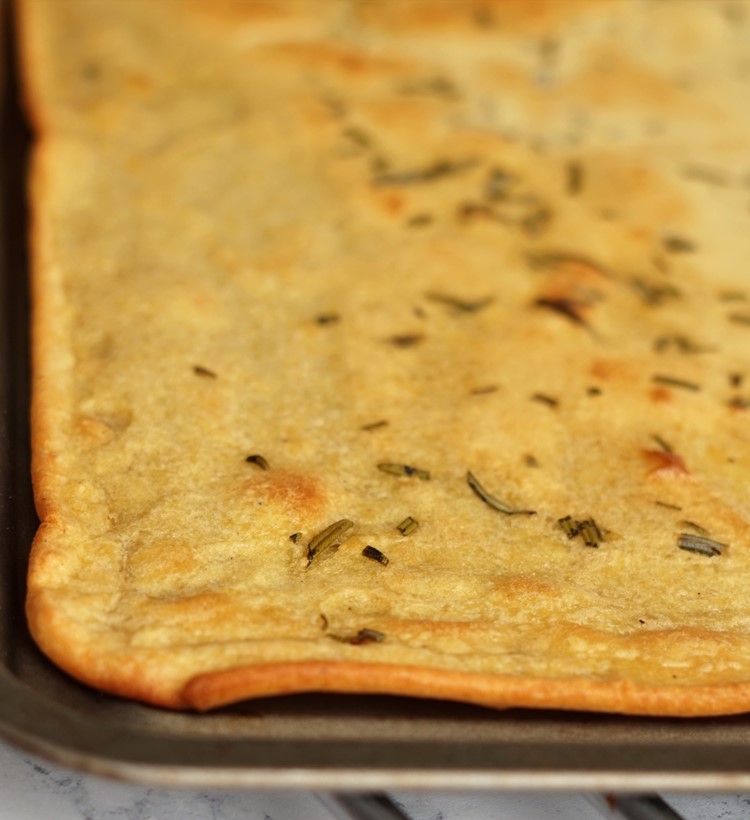
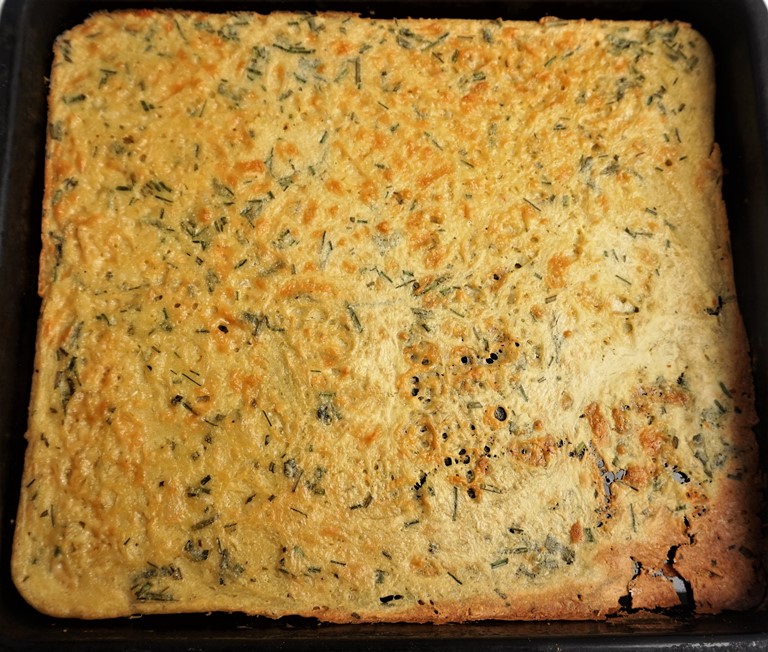
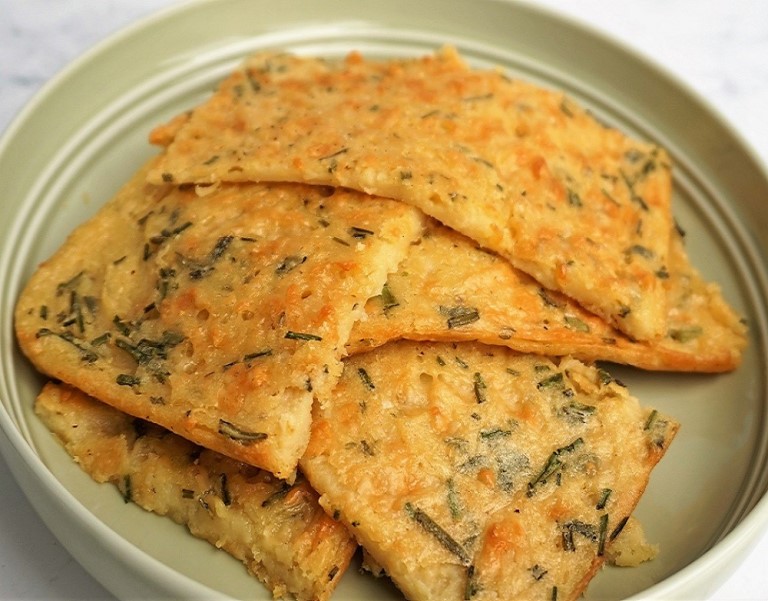
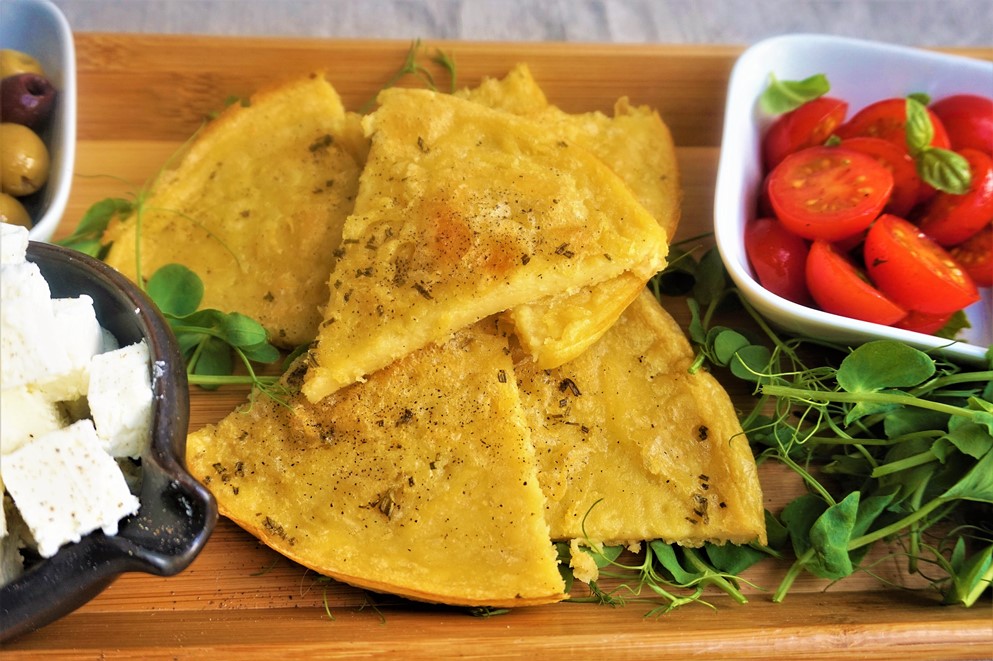
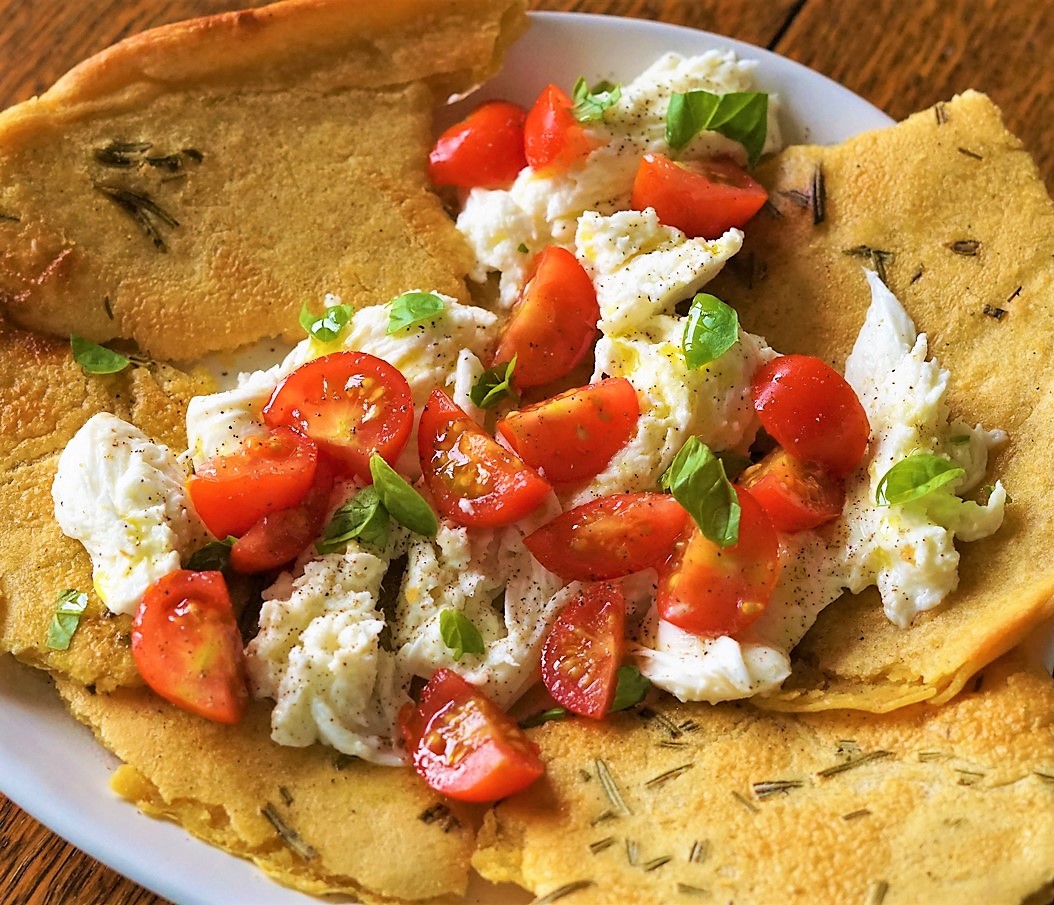
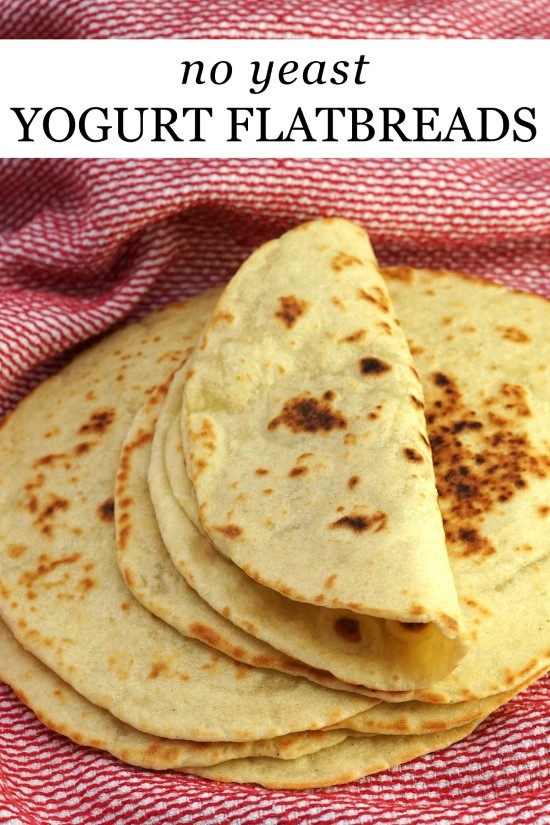

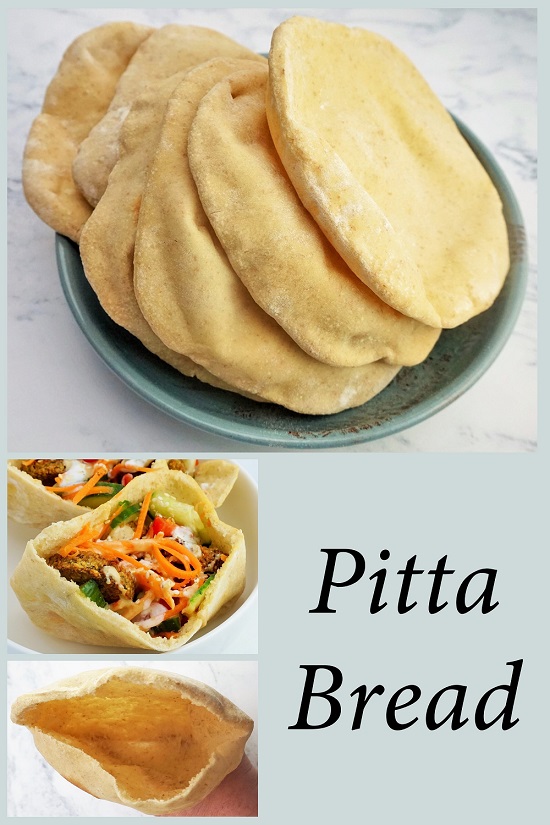
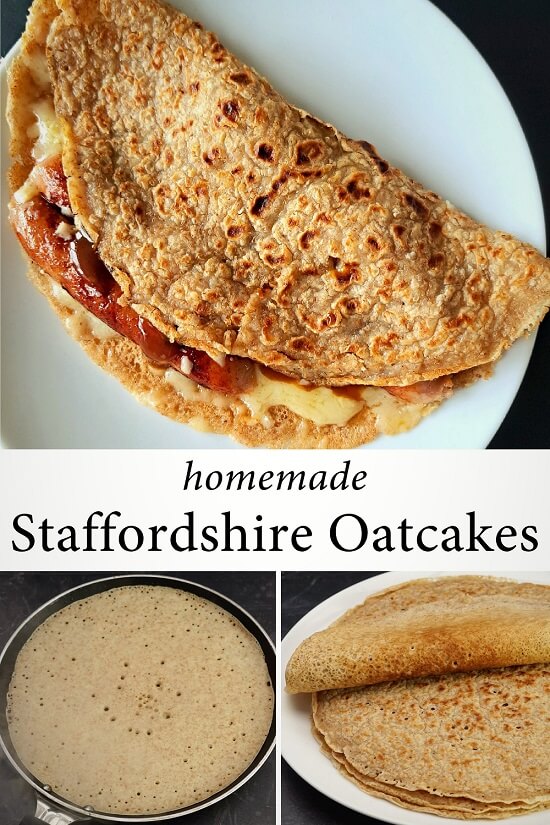
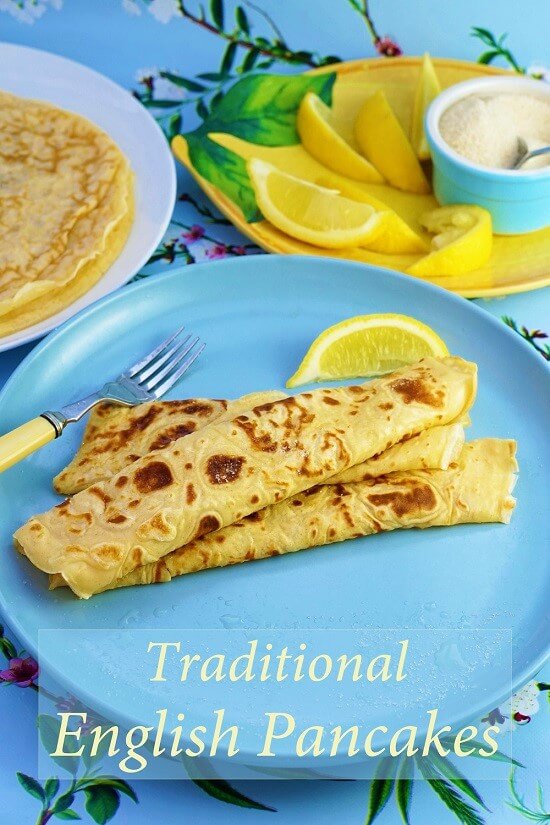
I love socca but had never seen it cooked as a pancake before. I often add fetta and olives when I make mine, which I do in a cast iron frying pan in the oven.
Feta and olives sounds like a lovely addition, Jill!
Unfortunately it stuck to my baking tray even tough non stick and oiled well 🙁
Sorry to hear that, Angela. I’ve not had that feedback before but if your tray was non stick with plenty of oil in it, the only other things I can think of which would mean the socca stuck to it are: the oil was not hot enough when the batter was added and/or the socca needed longer cooking.
Again, sorry that you didn’t have a good experience.
Brilliant recipe. Thank you. I made one in the oven and added lots of rosemary and paprika, with a scattering of sun-dried tomatoes , onion and nigella seeds. Delicious.
Thank you for the lovely feedback, Linda. Love the sound of your flavourings!
Loved the flatbreads. You are right to say just stack with sheets of kitchen paper before serving. They dry out very quickly even in a cool oven! So simple to make, I’ll definitely do again.
Thank you Yvonne! Pleased you enjoyed them 🙂
I bought some roosted chickpeas that were too dry for snacking, so I ground then into flour. This sounded like a great way to use it, but my fried pancakes keep breaking apart. Would more water solve the problem? I couldn’t use them as a wrap, but they were still tasty under some eggs.
Hi Amy, thanks for your feedback. I think ground roasted chickpeas are too dissimilar to gram/chickpea flour so can’t really recommend you substitute them in this recipe.
My guess is that, even ground up, the roasted chickpeas (which may well have been cooked in oil) will never absorb the water properly – this means the pancakes won’t hold together.
If you want to make your own chickpea flour then I’d suggest grinding up raw, uncooked dried chickpeas, although I haven’t tried this myself.
Delicious
Just made the flatbread version again and loved them. See I forgot to leave a rating last time!